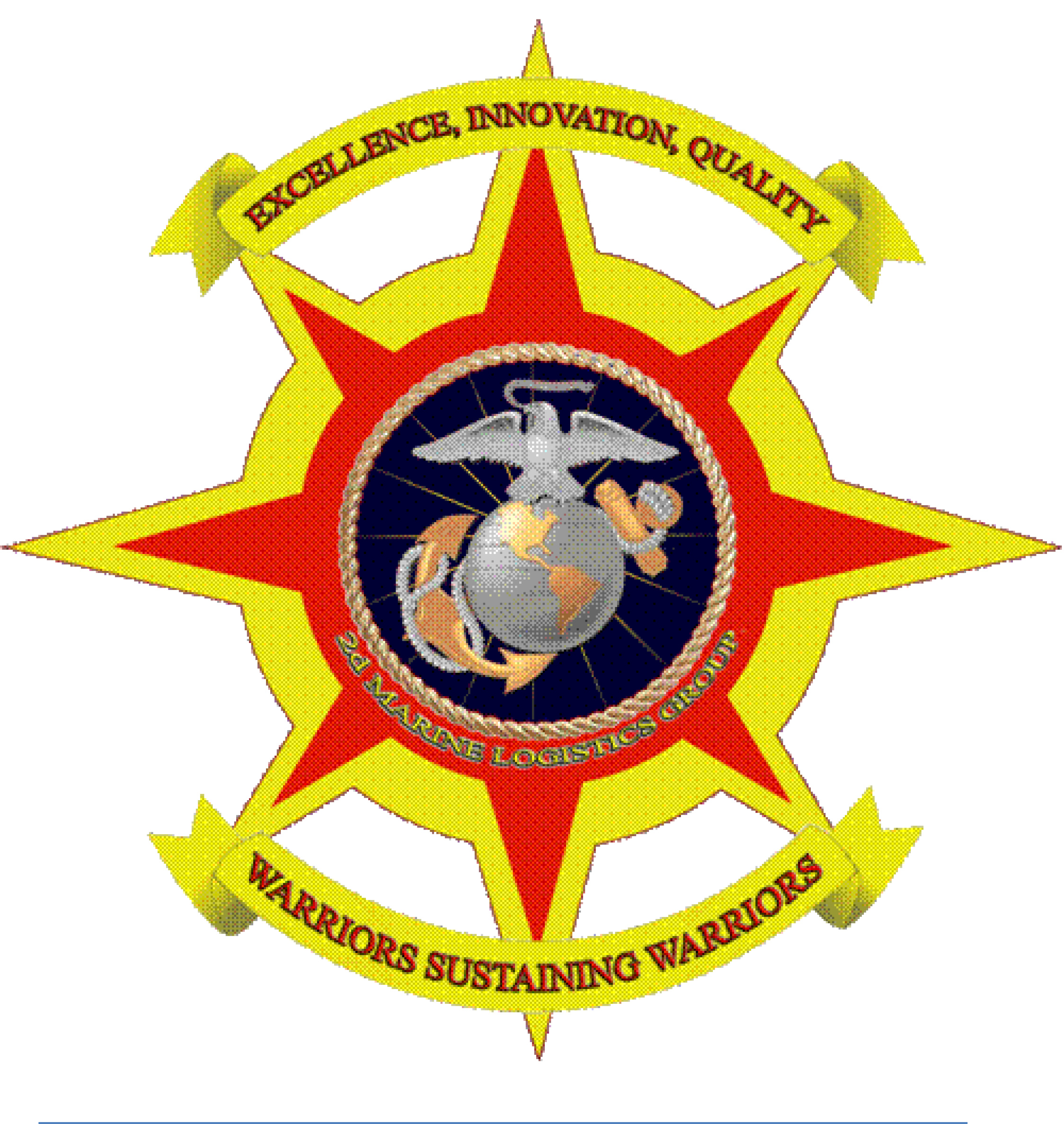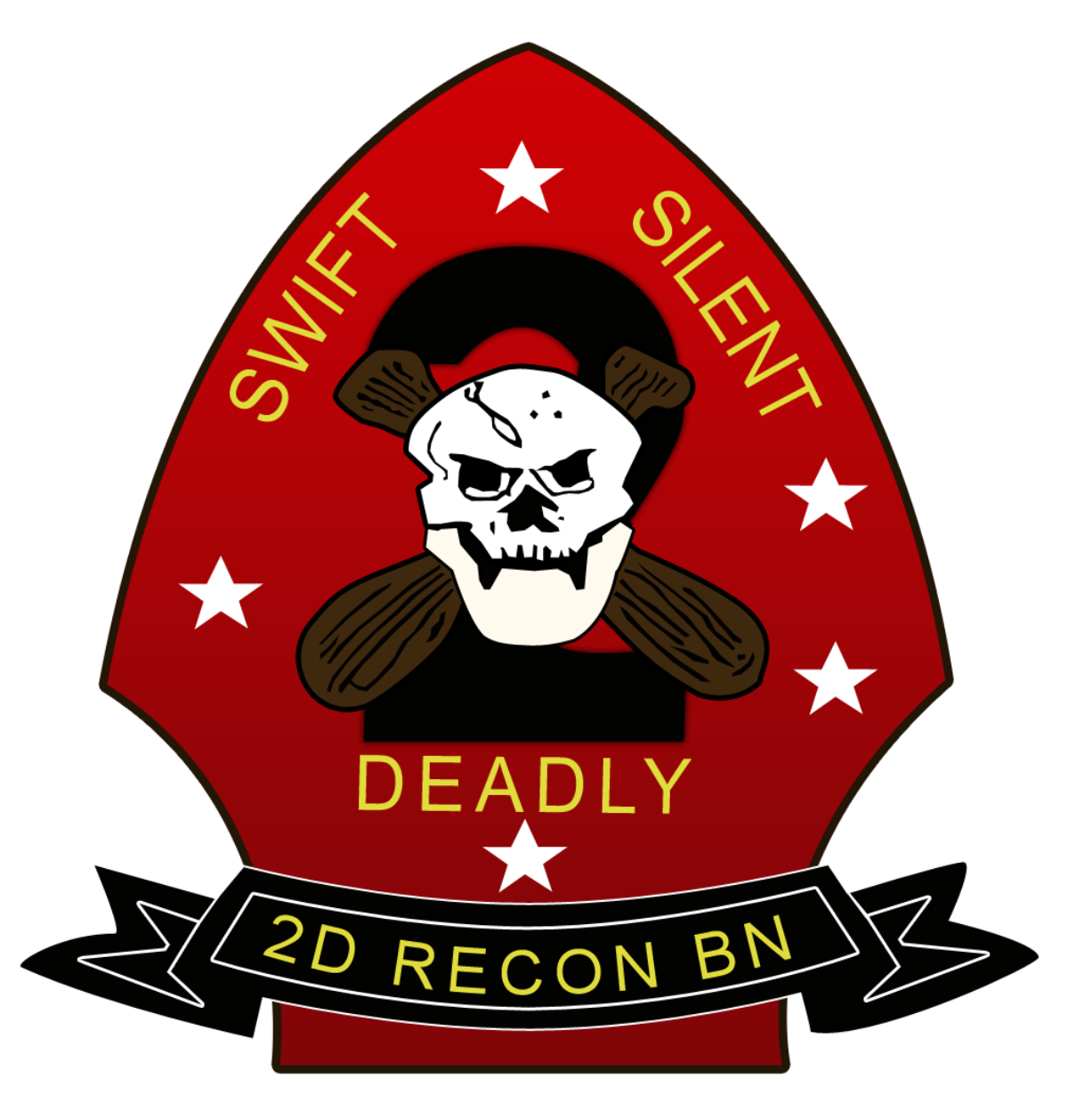2nd Marine Division Units - The 2nd Marine Regiment is an infantry regiment of the United States Marine Corps. They are based at Marine Corps Base Camp Lejeune, North Carolina, and are under the command of the 2nd Marine Division and II Marine Expeditionary Force.
A "Second Regiment" of Marines was created in 1901, when volatile conditions in the Far East demanded the presence of a naval expeditionary force to protect American lives and property. 1st Regiment and 4th and 5th Battalions Indepdt The regiment was formed at Cavite, Philippines on 1 January using personnel for units directly returned to the Philippines from service in the Boxer Rebellion in China. The 2nd Regiment was part of the 1st Marine Brigade based in the Philippines, ready to be engaged wherever needed in the waters of the Far East. Following the collapse of the Philippine resistance in the Philippine–American War, the latter was given the additional mission of assisting the military government in the Cavite Peninsula and Subic Bay region to manage the responsibilities of the United States Navy. Regime marines established garrisons and outposts and constantly patrolled their designated areas to round up remaining rebels and maintain law and order. To carry out the responsibilities of the regime's military government, officers were assigned to various special duties such as port captains, district commanders, customs inspectors, internal magazine collectors and judges and provost marshals. As the political situation in the Philippines returned to normal, drills, practice marches and field exercises took place. are emphasized to a greater extent. In January 1914, the regime reassigned most of its units to ships and other Far Eastern stations. On 20 January, the 2nd Regime was officially disbanded, with the transfer of the field and headquarters (headquarters) to the Provisional Regime, Guam.
2nd Marine Division Units

The "2nd Regiment", which served in the Far East at the same time, was organized on 26 December 1903 at League Island, Pennsylvania, consisting of the 2nd Regiment, Field and Staff, 1st Provisional Brigade and Companies A, B, C, F. The regiment left for Panama on the same date and arrived there on 3 January 1904. The main objective of this force in Panama was to enforce the terms of the Hay-Heron Treaty signed with Panama on November 18, 1903. Construction of cross-isthmus canal.
Nd Battalion 2nd Marines 2nd Marine Division 1958 Mediterrranean Cruise Book
In late 1906 a revolution broke out in Cuba and a naval expeditionary force was sent to the island to establish and maintain order. As part of this force, the 4th Expeditionary Battalion was organized on 27 September 1906 at League Island, Pennsylvania. The battalion traveled to Cuba and arrived at Camp Columbia on 8 October. Here II Regiment, I Expeditionary Brigade, was reorganized and reassigned. Order was quickly restored, and with the arrival of United States Army troops as an occupying force on October 31, the 2nd Regiment was disbanded.
The last of these provisional organizations, "Regiment 2", was designated at Philadelphia on 19 February 1913 as the 2nd Regiment, 2nd Provisional Brigade. The regiment was originally intended for duty in Mexico as part of an expeditionary brigade. Instead, it was stationed at Guantanamo Bay and kept ready for emergency duty while undergoing intensive training. On 1 May, the unit was redesignated the 2nd Regiment, Expeditionary Force, USMC.
The origins of the modern 2nd Naval Regiment date back to its activation on 19 June 1913 at the Philadelphia Naval Shipyard as the 1st Advanced Base Regiment. The following year the name was changed to 1st Regiment, Advanced Base Force. In 1914 the unit landed as part of a combined force to secure and occupy the Mexican port of Veracruz. This short number resulted in two Medal of Honor (MOH) awards to regimental members Wdell C. Neville and Smedley D. Butler. The following year, the regime was sent to Cap Haitien, Haiti, to protect American lives and property. It became a protracted occupation during which the regime conducted extensive patrols, engaged in several pitched battles and trained local police forces. The single most important action was the reduction of Fort Riviere, the most famous rebel stronghold. Smedley Butler and Daniel Daly both received their second Medals of Honor for acts of valor in Haiti.
In 1916, the unit was redesignated II Regiment, 1st Brigade. In 1933, the 2nd Regiment was redesignated the 2nd Marines. A year later, the Second Marines left Haiti and was disbanded on August 15, 1934.
U.s. Marines Participate In Advanced Marksmanship Drills During Exercise Fuji Viper 21.1
The 2nd Marines was reactivated in February 1941 at San Diego, California. This time the regiment was part of the newly formed 2nd Marine Division. The remaining elements of USS President Adams, USS Alha, USS President Hayes, and USS President Jackson were placed on twenty-four-hour power alert with the acting division commander and headquarters embarked on USS Crescent City. Travel on 24th June. Destination Guadalcanal.
The ships were ready for battle-loading and landing operations after arriving in the South Pacific on 1 July 1942 from San Diego to reinforce the 1st Marine Division in the Battle of Guadalcanal in 1942-43. On 7 August 1942, and in support of the attacks on Tulagi Island plus Gavutu and Tanambogo Islands, the 1st Battalion, 2nd Marines landed at two locations on Florida Island.
Finding no Japanese troops, the 1st Battalion, 2nd Marines moved during the day to support the 1st Marine Parachute Battalion at Gavutu and Tanambogo. Gavutu and Tanambogo are connected to each other by a causeway. The landing attempt of Co. B, the 2nd Marines were unsuccessful on the north coast of Tanambogo. On August 8, 1942, the Third Battalion, Second Marines plus two tanks in Co. C, 2nd Marine Tank Battalion landed southeast of Tanambogo. After a hard fight, Tanambogo was secured during the night. Gautu Island was also secured on 8 August 1942. Other units of the 2nd Marines secured the islands of Makambo, Mbangai and Kokotambu (all near Tulagi Island) on 7 and 8 August 1942. On 9 August 1942, Marine HQ 2nd plus attached companies 2nd Amphibious Battalion, 2nd Service Battalion and part of 3rd Battalion, 11th Marines (an artillery division) were withdrawing Marines at Espiritu Santo. By the cargo ship USS Alha, headquarters of the 2nd Marines, including Col. J. M. Arthur, landed at Tulagi on 22 August 1942. The 2nd Marines then moved to Guadalcanal, engaging in combat on Guadalcanal from 7 October 1942 with elements of the 2nd Marines.

The regime was awarded a Presidential Unit Citation (PUC) for its actions in the final stages of the war. This is the first time that such an award has been received.
Sticker Usmc Unit 2nd Battalion 12th Marine Regiment Ooo Usmc Lisc# 20187
After Guadalcanal, Reign moved to New Zealand to rest and recuperate. In November 1943 the regiment took part in the bloody attack on Tarawa. The commanding officer, Col. David M. Shoup, future commandant of the Marine Corps, received the Medal of Honor for his steadfast leadership at Tarawa. This is the only medal awarded to a member of the regime during World War II. The motto of the regime also originated from this battle. The regime received a second PUC for its bravery there.
The 2nd Marines served as a pre-landing decoy force at both sites before coming ashore to join the main assault. Once again, the regime was used as a demonstration force in the Battle of Okinawa in 1945.
After Japan's surrender, the regime took over the occupation of Nagasaki, Japan, which lasted nine months. The 2nd Marines returned to MCB Camp Lejeune, North Carolina, and remained there from 1946 as part of the 2nd Marine Division.
At Camp Lejeune, the primary mission of the Second Marines was to serve as a standby force. This includes daily training, participation in annual training exercises and overseas deployments. Ongoing contingencies included conducting annual "medicine cruises" as the Sixth Landing Force and conducting sporadic raids in the Caribbean. Components of the 2nd Marines landed in Beirut in 1958, participated in blockade operations during the Cuban Missile Crisis in 1962, and stability operations in the Dominican Republic in 1965. The regiment remained stateside during the Vietnam War, but was called up when Iraq invaded Kuwait. In August 1990. Regimental Landing Team 2 (RLT 2) comprised the Navy's land combat group at sea in the Persian Gulf during operations Desert Shield and Desert Storm. A rescue team, including regime assets, was formed at the mother's urging to rescue Americans and other foreign nationals besieged by insurgents in Mogadishu, Somalia. During World War II, RLT 2 served as a diversionary force connecting Iraqi forces to the coast, but the main offensive hit inland during the liberation of Kuwait in 1991. A battalion (2/2) joined the 6th Marines to break through Saddam's infamous line. North to close Kuwait City. The 2nd Marines was given Marine Unit Command for its actions in Southwest Asia.
Nd Battalion 10th Marines 2d Marine Division Artillery Patch
The regime returned home in 1991, engaging in other military activities apart from the war. These included relief operations, humanitarian aid and security operations from Haiti to Camp Lejeune in 1992.
2nd infantry division units, 2nd marine division patch, 2nd marine division logo, 2nd marine division ww2 roster, 2nd marine division association, 2nd marine division history, usmc 2nd marine division, 2nd marine division ww2, 2nd marine division camp lejeune, 2nd marine division band, headquarters battalion 2nd marine division, 2nd marine division
0 Comments